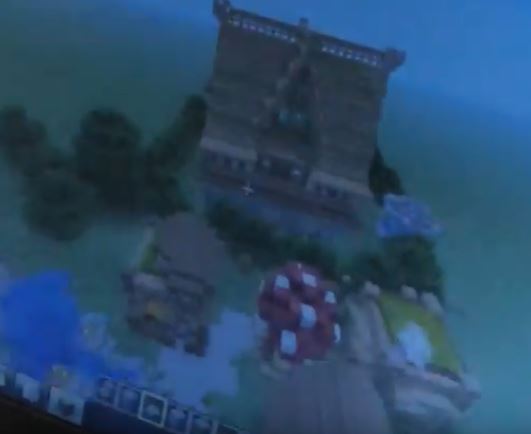Summary
The purpose of this lesson is to engage students in creating their own 3D animal mosaic sculpture. While on a virtual field trip to the Virginia Museum of Fine Arts and other museums with mosaic collections, students view numerous animals and select an animal that has movement in its pose. This selection becomes a reference for the sculpture they will create. Using an interesting pose and purposeful arrangement of color, students work to create movement in an animal sculpture. Student tools include the use of a wooden board with a dowel rod glued in the center for a base. They build an armature on the top of the dowel rod by forming and taping wire and foil together into specific shapes to create the basic form and structure of an animal. They use paper mache to cover the armature to create a strong, solid surface on which to apply mosaic glass tiles. Once the paper mache is dry, they glue mosaic tiles onto the form to cover the surface of the sculpture. During the final stages of this project, students apply various patterns, colors, and alternative materials (such as string, rocks, etc.) to the surface of the sculpture with mosaics.
TIPC Ratings
In addition to taking a virtual tour of the mosaic collection at the Virginia Museum of Fine Arts, students acquire information on two additional museums which have a mosaic collection and virtually tour the mosaic artwork. Working in small groups of two or three, students determine whether or not the museums have an accessible virtual tour for non-members as well as the size, scope and content of the mosaic collection. Numerous search engines (not just Google), meta search engines and databases are used to locate museums that have a mosaic collection. Each group determines the criteria (questions) they will use to screen the museum’s mosaic collection. Given the software tools on their laptops, they determine how they will capture a screen shot of the image for future reference in this project. Students organize their images in terms of complexity, movement, colors, etc. They add comments to a discussion forum noting why they selected each image and why they think this image could be a guide to create their own original mosaic sculpture.
Students, working in small groups, benefit from their collective experience in locating museums (national and international) that have a mosaic collection that can be virtually toured by non-members. For this collaborative project learning activity, each group determines how they will organize to complete their investigation efficiently. Students also determine how they will utilize a variety of search engines (beyond Google), meta search engines and databases as appropriate digital tools for locating suitable museums. As they work in small groups to investigate and research, they discover a number of museums world wide with mosaic collections. This broadens their scope, appreciation and understanding of the importance fine art museums as an integral part of our culture.
This project learning activity engages students in developing cognitive skills which are needed for academic, personal and social development. For example, students develop the ability to perceive, analyze and think in visual images as they investigate mosaic collections. As they discuss and analyze images of mosaic animal sculpture within their group, they respond to the following higher order thinking questions to ascertain the credibility of the sculpture for this project: Explain what you think the artist is trying to say about the mosaic sculpture(s) you select. If you could interview the artist, what questions would you ask? What is the theme or subject? Describe the mosaic sculpture. A discussion forum is available for student responses. Students must discern the complexity of the sculptures and their ability to use the image as a guide in creating their own original work for this project.
Students create a mosaic sculpture of an animal from an image they select while taking a virtual tour of the Virginia Museum of Fine Arts or another museum. They scrutinize several images while online and observe how they images were sculpted, the structure or base materials used. They discuss and select images that are interesting, containing lots of movement and can be replicated within the time frame for this project. Students observe the trends and style of the mosaic collections online and make predictions as to how they can apply these same techniques to the work they will create. Students are at liberty to take strategic risks regarding the weight and shape of the materials they apply to their sculpture. During the sharing/reflection session, students discuss the successes of their experience in creating a mosaic animal sculpture and the things that went wrong during the process. These comments are collected on a discussion forum in SchoolSpace for future reference, growth and interaction with similar and new art project. It is important for art students to reflect on their experience for the purpose of finding their “voice” or meaning within the work they create.





